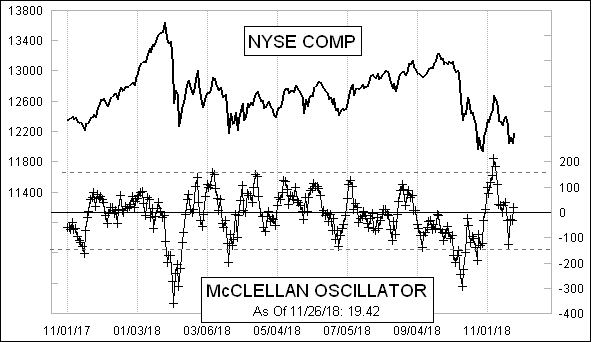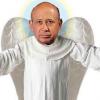went full position in that last NQ long, 8 lots (4-2-2)
Still BULLISH but....market skittish, unstable, seeking direction...
#11

Posted 27 November 2018 - 10:17 AM
#12

Posted 27 November 2018 - 10:21 AM

#13

Posted 27 November 2018 - 10:36 AM
Short SPX@2672
#14

Posted 27 November 2018 - 12:02 PM
Yeah, expect more dovishness for the rest of the year from the FED hence the rally into year end....there will be an interest rate hike in December but it is priced into the market..
Will Jerome Powell toss markets a bone, or leave them hungry?
The central bank “put” has been a fundamental component of global financial markets for about 30 years now – roughly the same length as the bond bull market in fact.
A “put” is a term from the world of options trading. A put is an option that gives you the right (but not the obligation) to sell an asset at a set price within a set time period. In other words, a put option gives you some protection against a falling market.
The assumption that central banks will always step in to put a floor under markets is something that investors have come to rely heavily on in recent years.
Now they’re hoping that Federal Reserve chairman Jerome Powell will follow in the footsteps of his predecessors.
But will he?
The history of the central bank put
Central banks have been bailing markets out virtually since they were created – the main purpose of a central bank is to prevent the banking system from going under.
However it was Federal Reserve chairman Alan Greenspan who turned market protection into an art form. Under Greenspan, the Fed became a sort of “market whisperer”. When investors showed any sign of being skittish, Greenspan would cut interest rates to make them feel better. No emergency was too small.
It’s hard to tell in retrospect what Greenspan thought he was doing. But it’s probably no more complicated than the fact that it’s nice to give people good news and then get patted on the back for it.
His reputation is far more chequered now (he cops, and deserves, a lot of the blame for the financial crisis) but back in the day he was known as the “Maestro”. When people are worshipping you, it's hard to dissent.
Anyway, this mollycoddling was continued under Ben Bernanke and then under Janet Yellen. And no wonder – after the 2008 crisis, the sense of walking on eggshells was enormous.
Throw in the propensity of people in power to imagine that the masses are only ever one big tantrum away from turning into mobs roaming the streets of a dystopian wasteland, and you have a recipe for treating investors with kid gloves.
As a result of all this, interest rates were kept low, the money printing lasted for far longer than anyone imagined, and we’ve had a long, slow recovery with plenty of mal-investment (investment in projects that can’t hope to pay for themselves once funding is withdrawn) along the way.
So that’s the backdrop. Markets grew used to being picked up every time they fell on their backs, so they took bigger risks than they otherwise would have. That’s called moral hazard, and it’s a key driving force – if a much-derided one – of financial market behaviour.
But what about today? Fed chair Jerome Powell appears to be made of sterner stuff than Janet or Ben or Alan. The October slide in markets went by and he didn’t blink.
That has investors rattled...
When is Powell speaking again, thanks?
#15

Posted 27 November 2018 - 01:22 PM
what the hell happened there?
spike up & down












